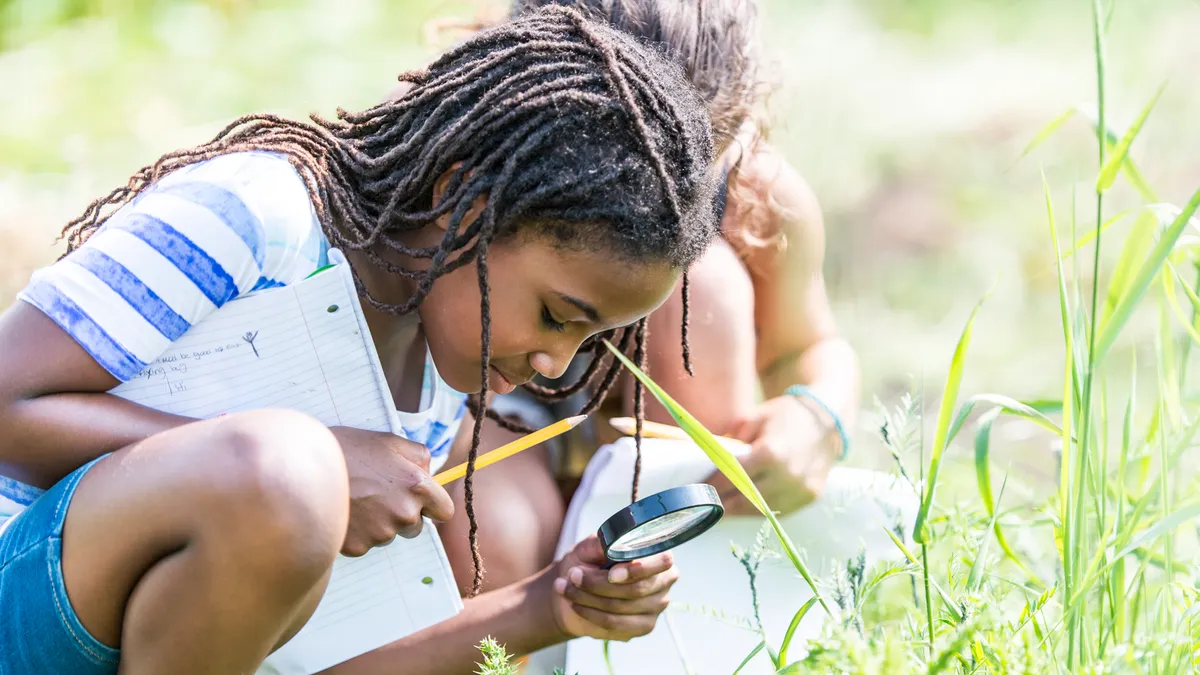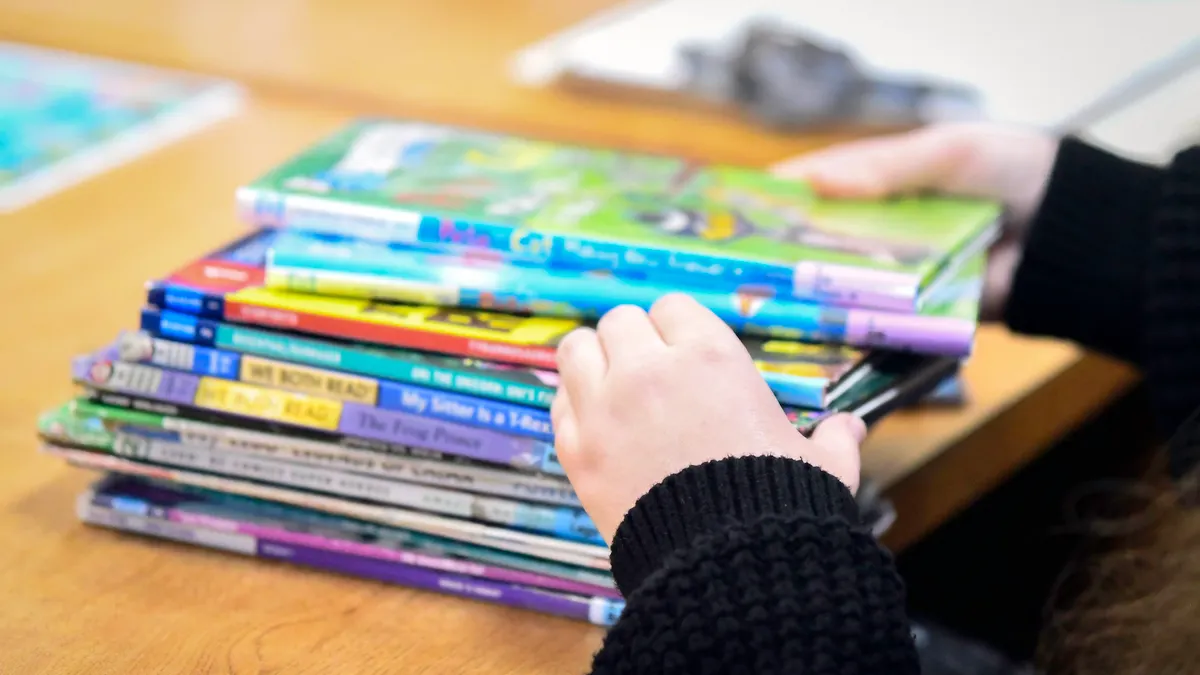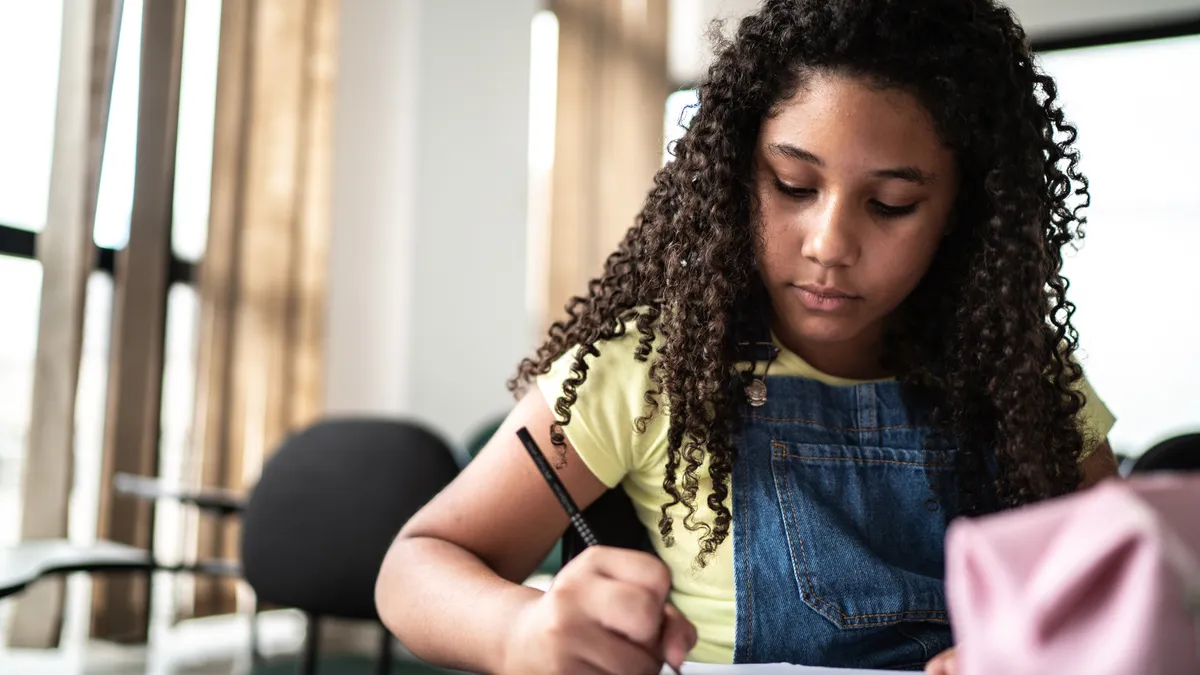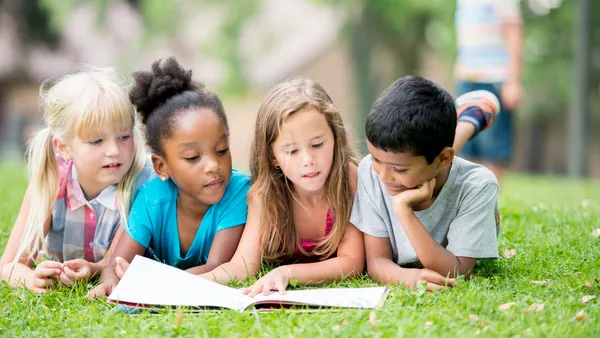Editor's Note: This is the first of two stories in a package on innovative learning spaces. For the second, check out "School redesigns accommodate today's (and tomorrow's) teachers and learners."
With couches, chairs, a lost-and-found bin and a colorful display of student-made Day of the Dead Calaveras on a bookshelf, the reception area of the Khan Lab School (KLS) doesn’t appear much different from a typical school site.
But that’s where the similarity stops. Scattered throughout a large, well-lit space on this first level of a Mountain View, CA, office building, children who would normally be in 1st through 4th grades in a traditional school tap away on laptops or sit huddled together on lightweight stools. The room is surrounded by smaller breakout spaces, with whiteboard walls, where specialists in math, language arts, Spanish, French, computer science or other subject areas converse with a handful of students at a time.
Desks and curved benches can easily slide to other parts of the space — flexibility that’s needed because groupings are constantly shifting depending on students’ academic growth as well as their “independence level,” a set of expectations a student must reach to have more time to work on his or her personal learning goals. Grouped in this space are students working at levels two through four.
“It depends on their executive function skills,” says Kat Clark, KLS’s head of marketing and community, as well as the school’s yearbook adviser. “Traditional schools make things simple for adults, the schedule is for adults. But they lock kids in. If you’re passionate about something, you should be able to keep going.”
Now with an additional classroom space for students through 9th grade, which just opened this fall, the school is accommodating students moving on to levels five and six. With a similar layout, the new upper school also includes a glass-enclosed art studio, smaller phone-booth-sized rooms for working quietly or meeting with an adviser, and, in keeping with Silicon Valley workspaces, a teacher’s lounge stocked with complimentary snacks.
In what could be the ultimate example of flipped learning, KLS students and teachers learn and work downstairs from Khan Academy, the repository of online educational videos founded by educator Salman Khan that have helped millions of children and adults worldwide learn and practice specific skills and prepare for exams.
While KLS is an independent school, Khan and the school’s leaders are hoping to learn lessons they can share with public schools, as well. Executive Director Dominic Liechti, who previously worked at an International Baccalaureate school, says he’s interested in finding the right balance between a student working at his or her own pace in a mastery-based model and the human interaction that keeps personalized learning from becoming impersonal. Meanwhile, he’s keeping an eye on what’s happening across the field among those trying to answer similar questions, such as AltSchool, which announced earlier this month that it would close two of its lab schools.
Making learning visible
With other schools across the country beginning to construct similar open spaces, KLS will also have some experiences to share regarding the use of the space. Unlike standard, closed-off classrooms, “this space creates community,” says Liechti. “Learning is visible.”
Clark adds that when the school’s leaders were choosing furniture for the space and making other decisions about the design, they wanted to incorporate pieces that were relatively affordable and that principals and teachers in any school could see themselves using.
Danish Kurani, the architect who designed the new upper school, adds that unlike most classrooms, which are roughly the same size and have the same furniture, KLS’s rooms are meant to better accommodate what students are doing, whether it’s having a conversation or making something, while still being flexible. The question that helps to guide his design, he says, is “If you think about the activities and behaviors, what do you want to see happening in a space?”
“This section changes every week,” Clark says about a nook in the upper school where students have pushed desks against the wall for the times they need less interaction with classmates. In another area of the room, one of the youngest level-five students, around age 11 or 12, is talking with older students seated around a table, showing how the space allows for mixed-age collaboration when needed.
‘Time for students to be individuals’
At KLS, each student has a personalized “playlist,” a color-coded schedule showing whether he or she is working with a teacher, having whole group instruction and doing project-based learning in “studio time,” or meeting with other students at the same level. The schedule also shows when students are having “goal time,” which means working independently.
Teachers don’t assign homework, but they say students continue to complete tasks at home because they are working toward goals they’ve set for themselves. KLS also operates on a year-round schedule and admits new students when there is an opening at a particular level. “We’re trying to get rid of the stigma that everyone enters and exits at the same time,” Clark says.
Liechti adds that having content area specialists even with elementary-age children allows them to have “different inputs,” while the advisers can focus on the child’s overall progress.
The school’s leaders learned, however, that those working at level one — the kindergartners — needed a little less input. That’s why the school’s youngest students are now in their own space, which Clark calls “a little more nestled,” instead of grouped with children at levels two through four. Similar to a Montessori model, however, their school day is based on the question of “how do we make kids more independent?” she says as she watches a level one girl struggle, but then succeed at stretching a rubber band around two food containers.
A child can easily pick up and move the colorful, wobbly stools around the room and each child has a mat for rest time that they are responsible for rolling up and putting in their “cubbies” when not in use.
In the space for levels two through four, students this year are immersed in the school-wide concept of “power,” and focused this term on the sun. Students choose who they work with and how they will demonstrate their knowledge of the topic, whether they use art, writing, poetry, videos or other expressions. Exhibitions of final projects are also part of the final process.
Level three adviser Heather Stinnett, who worked in traditional public and charter schools before coming to KLS, says the shared space is a “great element” of the school.
“The mixed-age learning space creates a more consistent culture across the school because students are presented with the same expectations,” she says. “I also think there is a benefit to younger students observing the quality of work that older students are creating.”
As KLS students reach what would be grades 10-12 and work at level 7, Liechti is also thinking about how the space might need to adapt to students who leave for internships or other community and job experiences and come back to the school during the day.
“We’re building this space for the high school students of the future,” he says.
For Stinnett, KLS’s model not only allows her to plan and teach “exciting and deep conceptual projects,” but also to get to know her students much better. “That was something I always wished I had time for,” she says. “Traditional classrooms don’t leave a lot of time for students to be individuals.”
Students still have a lot of paper-and-pencil work that she reviews with them while also discussing what’s going well and what’s not working. Some students, she says are “hungry” for the independence, while others don’t know what to do with it.
“Some people think Khan Academy doesn’t believe in teachers,” Clark says, adding that the school’s approach “frees up” teachers to tailor instruction to students’ individual needs. “A teacher knows something about teaching that a computer doesn’t know.”



















